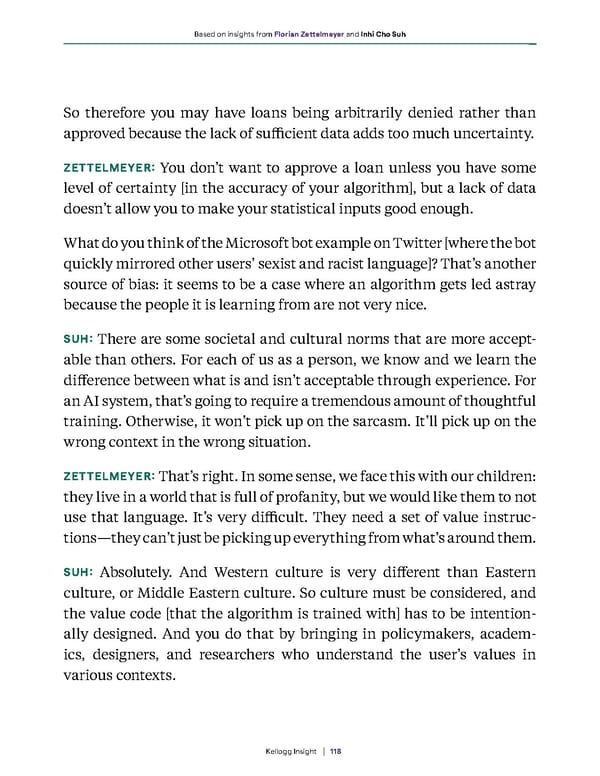118 Kellogg Insight So therefore you may have loans being arbitrarily denied rather than approved because the lack of sufficient data adds too much uncertainty. ZETTELMEYER: You don’t want to approve a loan unless you have some level of certainty [in the accuracy of your algorithm], but a lack of data doesn’t allow you to make your statistical inputs good enough. What do you think of the Microsoft bot example on Twitter [where the bot quickly mirrored other users’ sexist and racist language]? That’s another source of bias: it seems to be a case where an algorithm gets led astray because the people it is learning from are not very nice. SUH: There are some societal and cultural norms that are more accept - able than others. For each of us as a person, we know and we learn the difference between what is and isn’t acceptable through experience. For an AI system, that’s going to require a tremendous amount of thoughtful training. Otherwise, it won’t pick up on the sarcasm. It’ll pick up on the wrong context in the wrong situation. ZETTELMEYER: That’s right. In some sense, we face this with our children: they live in a world that is full of profanity, but we would like them to not use that language. It’s very difficult. They need a set of value instruc - tions—they can’t just be picking up everything from what’s around them. SUH: Absolutely. And Western culture is very different than Eastern culture, or Middle Eastern culture. So culture must be considered, and the value code [that the algorithm is trained with] has to be intention - ally designed. And you do that by bringing in policymakers, academ - ics, designers, and researchers who understand the user’s values in various contexts. Based on insights from Florian Zettelmeyer and Inhi Cho Suh
 The Marketing Leader's Guide to Analytics and AI Page 117 Page 119
The Marketing Leader's Guide to Analytics and AI Page 117 Page 119